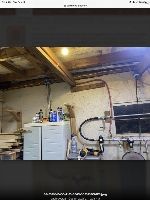- Joined
- Aug 24, 2021
- Messages
- 39
Hey all, just nearly finished the install of my air system with advice of those on this forum. After completing everything I pressurized it and cut off the air supply from the tank. I had the regulator set at 100 psi and after about 4 hours I saw that it lowered to 30 psi. I went around with soapy water to find any small leaks. I found 2, fixed them and pressurized again. Cut of the tank supply, regulator at 100 psi and after about 14 hours it was down to about 85 psi. I checked for leaks and couldn’t find anything, figured it was so light that it isn’t a big deal.
So I’ll explain the setup. The compressor is a Quincy 80 gallon with 7.5 HP Baldor single phase motor and an inter cooler/after cooler.
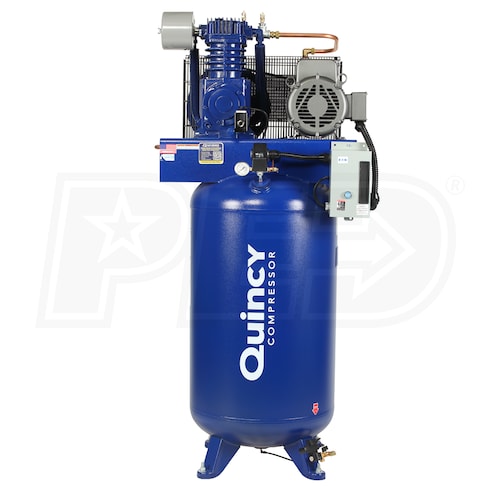
 www.aircompressorsdirect.com
www.aircompressorsdirect.com
Out of the compressor there is a ball valve that is hooked to a 7 foot long 3/4” hydraulic hose to isolate vibration from the wall. It then goes through a 10 foot length of 3/4” steel pipe. There is then a drop down with a ball valve so that I can evacuate any water that might be in the system. It continues through another 3 foot length of hydraulic hose to turn a 180. It goes into a Ingersoll Rand FA75IH filter.
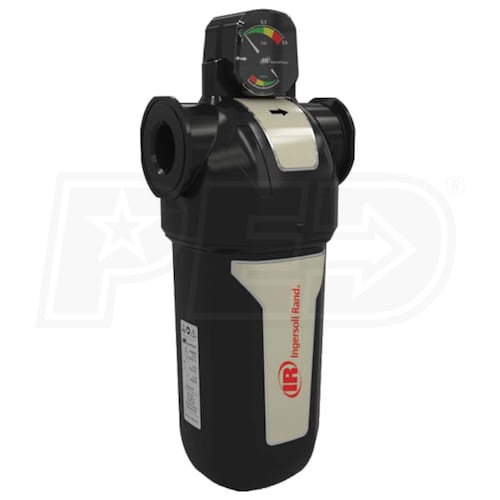
 www.aircompressorsdirect.com
www.aircompressorsdirect.com



I was told that I should have at least 10 feet of piping between the compressor and the first filter. With the hydraulic hoses and the steel pipe I have just over 20 feet. After that filter I have a 1/2” compressor hose running through a ball valve to my blasting cabinet. I wanted full tank pressure to run to the cabinet (150 psi) and then have a regulator at the cabinet. After the run there is a standard high flow hose fitting, just so if I want to I can use 150 psi through the air gun to blow out the dust or to fill my tires. It then goes into a Coilhose Pneumatics 8806 regulator
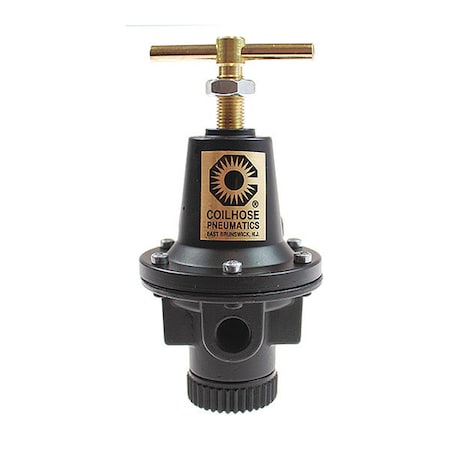
 www.zoro.com
www.zoro.com

This takes the pressure of 150 psi down to a hair over 90. After the regulator I step the pipe down from 3/4” to 1/2”. I have another drop down with all valve for any water. Of course I’ve had zero water from any of the drop downs. It then goes into a Motor Guard M-60 submicronic compressed air filter. It has the same rating as the IR filter I’m using, just at a lower PSI rating.
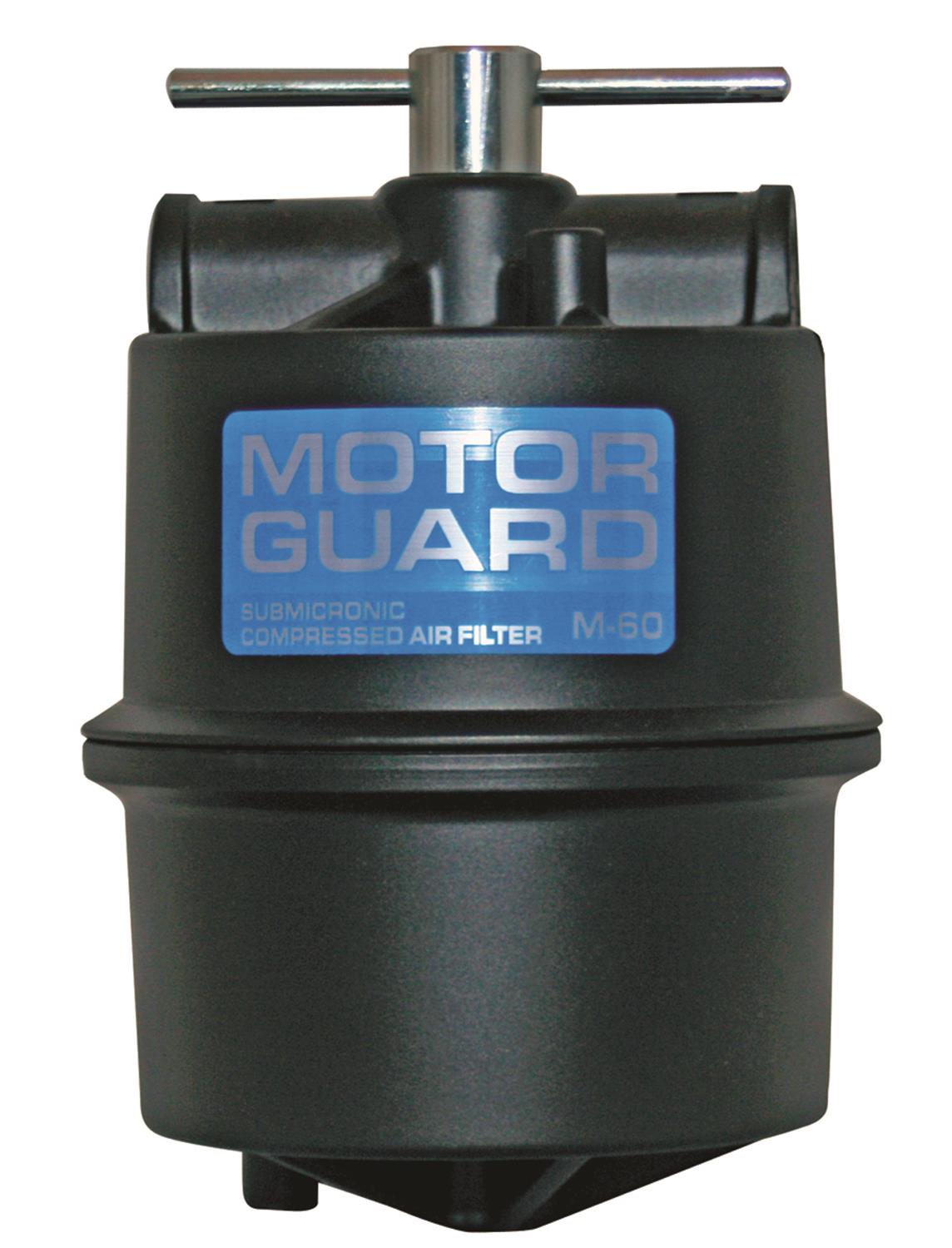
 www.summitracing.com
www.summitracing.com

And finally enters a manifold with four high flow connectors, one regular and a 1/2” ball valve that goes to a 1/2” hose that feeds a spool on the ceiling.

Please let me know if I did anything wrong.
Oh, and to help me keep track of the hours on the pump, to help with knowing when to do preventative maintenance and such, I installed an electrical counter. Any time the pump sees power the counter counts. I’m at this time sitting at 3/10ths of an hour, or about 18 minutes.

Dan
So I’ll explain the setup. The compressor is a Quincy 80 gallon with 7.5 HP Baldor single phase motor and an inter cooler/after cooler.

Quincy 471CS80VCB QT MAX 7.5-HP 80-Gallon Two-Stage Air Compressor 230V 1-Phase
Buy Quincy 471CS80VCB Direct. Free Shipping. Check the Quincy QT MAX 7.5-HP 80-Gallon Two-Stage Air Compressor (230V 1-Phase) ratings before checking out.
Out of the compressor there is a ball valve that is hooked to a 7 foot long 3/4” hydraulic hose to isolate vibration from the wall. It then goes through a 10 foot length of 3/4” steel pipe. There is then a drop down with a ball valve so that I can evacuate any water that might be in the system. It continues through another 3 foot length of hydraulic hose to turn a 180. It goes into a Ingersoll Rand FA75IH filter.

Ingersoll Rand FA75IH 3/4" 0.01 Micron High Efficiency Coalescing Compressed Air Filter 45 CFM
Buy Ingersoll Rand FA75IH Direct. Check the Ingersoll Rand 3/4" 0.01 Micron High Efficiency Coalescing Compressed Air Filter (45 CFM) ratings before checking out.
I was told that I should have at least 10 feet of piping between the compressor and the first filter. With the hydraulic hoses and the steel pipe I have just over 20 feet. After that filter I have a 1/2” compressor hose running through a ball valve to my blasting cabinet. I wanted full tank pressure to run to the cabinet (150 psi) and then have a regulator at the cabinet. After the run there is a standard high flow hose fitting, just so if I want to I can use 150 psi through the air gun to blow out the dust or to fill my tires. It then goes into a Coilhose Pneumatics 8806 regulator
Coilhose Pneumatics Regulator 3/4" CO 8806 | Zoro
Order Coilhose Pneumatics Regulator 3/4", CO 8806 at Zoro.com. Great prices & free shipping on orders over $50 when you sign in or sign up for an account.
This takes the pressure of 150 psi down to a hair over 90. After the regulator I step the pipe down from 3/4” to 1/2”. I have another drop down with all valve for any water. Of course I’ve had zero water from any of the drop downs. It then goes into a Motor Guard M-60 submicronic compressed air filter. It has the same rating as the IR filter I’m using, just at a lower PSI rating.

Motor Guard M-60 Motor Guard Compressed Air Filters | Summit Racing
Free Shipping - Motor Guard Compressed Air Filters with qualifying orders of $109. Shop Air Compressor Line Filters at Summit Racing.
And finally enters a manifold with four high flow connectors, one regular and a 1/2” ball valve that goes to a 1/2” hose that feeds a spool on the ceiling.
Please let me know if I did anything wrong.
Oh, and to help me keep track of the hours on the pump, to help with knowing when to do preventative maintenance and such, I installed an electrical counter. Any time the pump sees power the counter counts. I’m at this time sitting at 3/10ths of an hour, or about 18 minutes.
Dan
Last edited:


